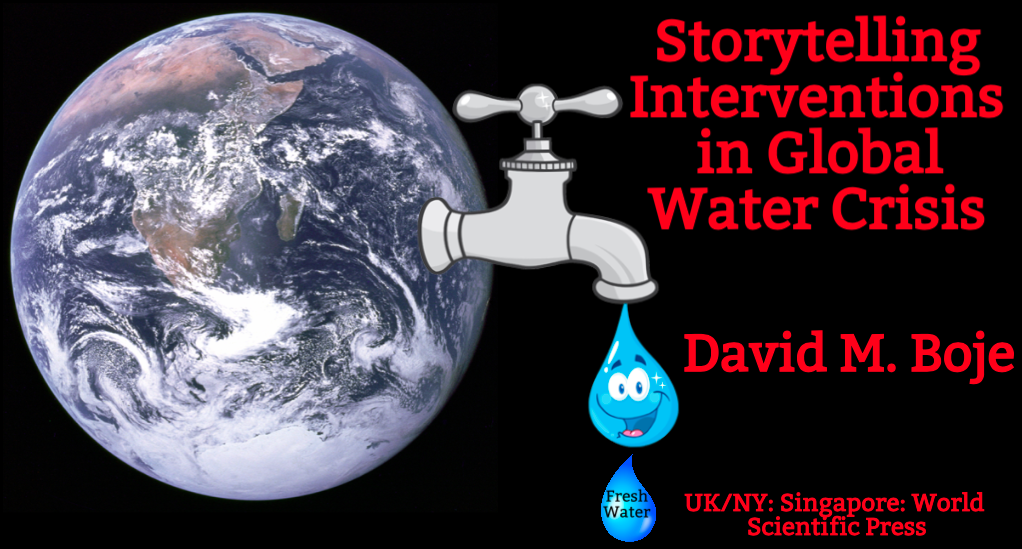Storytelling Interventions in Global Water Crisis
Book remains online until published by UK/NY:
Singapore: World Scientific Press
By David M. Boje
Whole Systems Approach to Deconstructing
Greenwash Storytelling
By taking a Whole Systems approach to Storytelling, we can begin to understand how climate action is being blocked by fake storytelling, greenwashing, and denialism. I find that a self-Validating Closed Loop has formed in most Business Storytelling. The problem is a lack of 'refutation' in business storytelling research methods. For example, Maude Barlow, Vadana Shiva, and myself have been making claims and warrants about Monsanto, Coca Cola, and PepsiCo concerning terminator seeds, and over-pumping groundwater, especially in India.
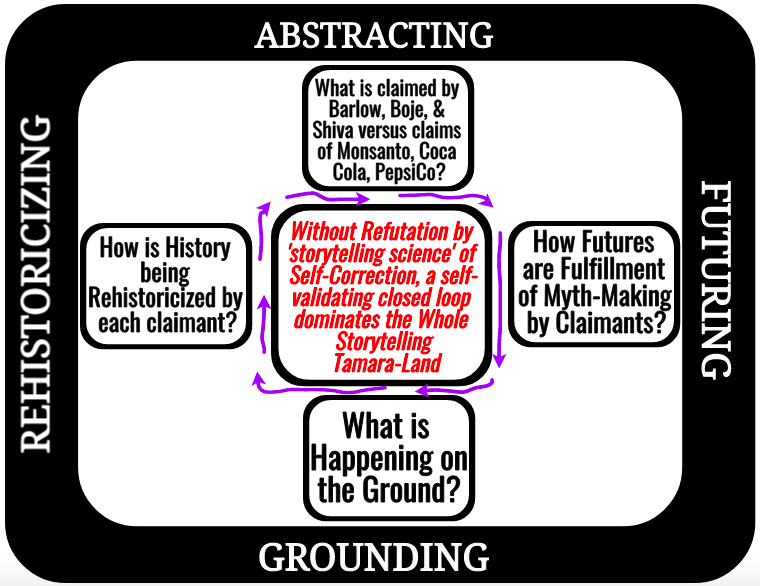
For example Coca Cola and PepsiCo claim they are helping local farmers in India by putting back more water into the aquifers than is pumped out by the bottlers of plastic water bottles and plastic/glass soda bottles.
HOW TO DECONSTRUCT COCA-COLA's WATER STORYTELLING? Slides from Boje presentation 2018
Coca Cola says “Water
We aim to give back the amount of water used in our finished beverages to replenish communities and nature”
SOURCE
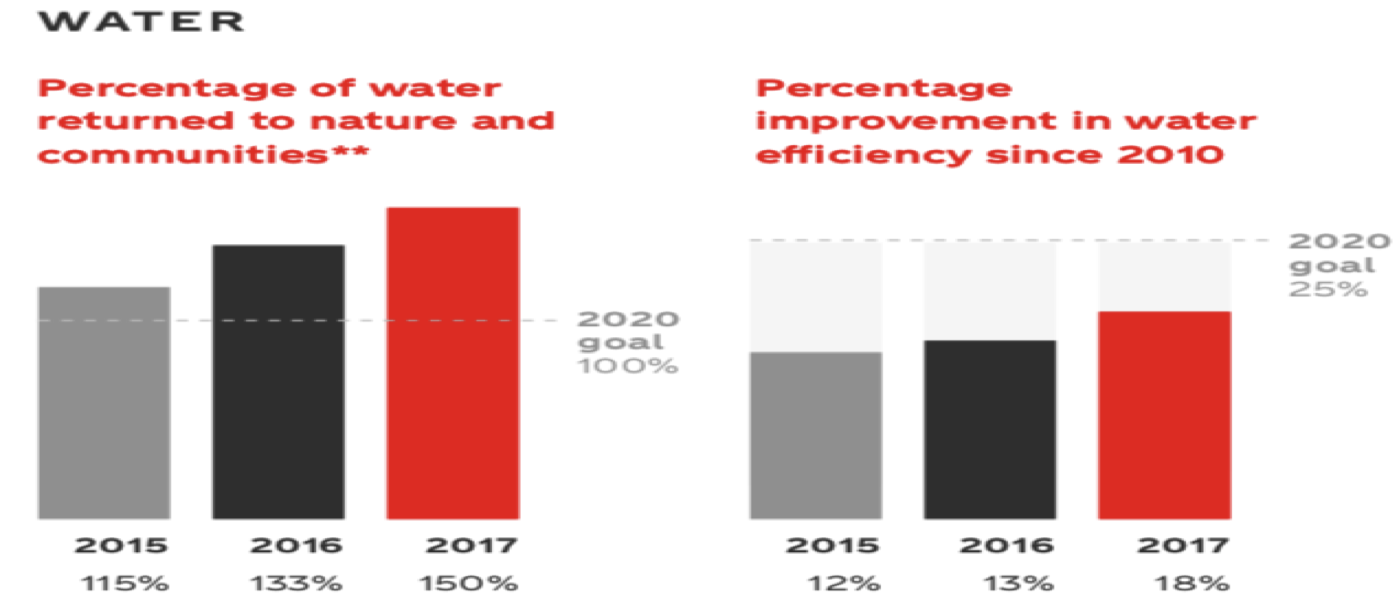
While water stress and challenges continue to
increase in certain regions, we believe the world has
enough fresh water to meet growing demands if correctly
managed and respected (Coca-Cola 2017 Sustainability Claims).
" We replenished 155%
of the water we use in our finished beverages to
communities and nature in 2018, continuing to exceed our
2020 goal. We also economically empowered more than
865,000 women in 2018, adding an additional 17 countries"
(James Quincy, Coca-Cola 2018 Sustainability
Report: p. 4). See also 2017 Coca-Cola Japan Sustainability Report claim
to return 115% Percentage of water used
for products returned to nature nationwide in japm (p.
12).

COKE CLAIMS TO GIVE BACK AS MUCH WATER AS
IT USES. AN INVESTIGATION SHOWS IT ISN’T EVEN CLOSE
by Christine MacDonald,
2018
- The company does not count water in its supply chain — including the water-guzzling sugar crop — in its “every drop” math.
- The company was
omitting its supply chain water consumption in its
corporate footprint: "
“Many organizations started doing these initial calculations, and found out that … for supply chain Water Footprints, if you are a company with an agricultural supply chain, these are huge, these water footprints,” he said. “There’s not enough water to go around” — meaning there aren’t enough viable offset projects to actually balance corporate agricultural water footprints."
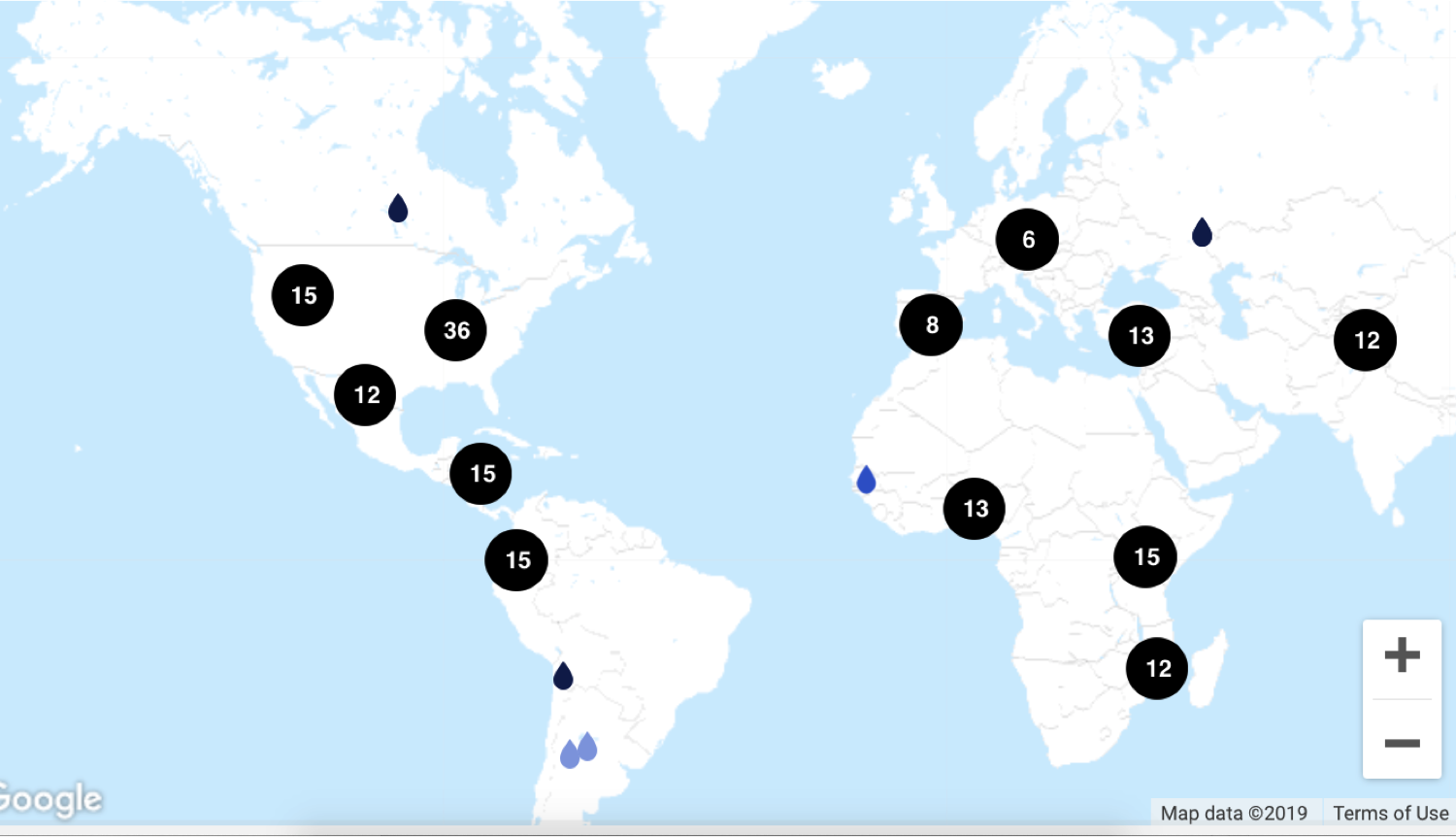
Here is an example:
" Continuing to Replenish the Water We Use
In 2017, we continued to replenish 100% of the water used in our finished beverages back to communities and nature, a goal we first met in 2015. Projects implemented by the end of 2017 are replenishing an estimated 248 billion liters per year through community and watershed projects globally, as estimated with the help of our many reputable partner organizations using peer-reviewed scientific and technical methods." (this part of 2017 Coca-Colareport still on line on line). The following no longer online:" Conserving water usage through improved irrigation techniques. Laser-leveling activities and conversion to drip irrigation is helping improve ground water availability...
"The project has expanded from 26 farmers in 2007, to touching the lives of 523 farmers. The goal is to reach 1,000 farmers within the next three years"
Read More ( This original Coca-Cola link no longer works, and you get redirected to Coca-Cola in the News)The counternarrative is once the claims were being publicly challenged, Coca-Cola withdrew its story map and some 200 case reports. You cannot even find a single copy of the 2017 Coca-Cola Sustainability Report on the web anymore.
Shiva, Barlow and by myself have a counterclaim: the well (straws) for Coca Cola and PepsiCo run deep, and much deeper than the farmers can support, thus putting on stress in not being able to pay to loan sharks, and resulting in farmer suicides. In my deconstruction of the Coca Cola and PepsiCo corporations ' narratives, I find they do not actually put water back into the ground, but rather do training of farmers in drip system agriculture, and other water saving practices done by the farmer themselves. Further, my hypothesis is neither beverage company is taking 'virtual water' into account for transportation and production costs. A single unit of bottle water takes not just one direct water fill, but virtual water of 2 more indirect water and a quarter of a bottle of oil for the energy.
READINGS ON IWOK:
Bishop,
R. (1996) Addressing issues of self-determination and
legitimation in Kaupapa Māori research. In: Webber, B.
(ed). He Paepae Korero: Research
Perspectives in Māori Education. Wellington, NZCER:
143–160.
Boje, D. M. (2016c). But
that’s not a story! Antenarrative dialectics between and
beneath Indigenous living story and western narratives.
Pp. 69-72 in Grace
Ann Rosile (ed.) Tribal Wisdom
for Business Ethics. Bingley, UK: Emerald
Group Publishing Limited.
Boje, D. M. (2016d).
Critique of the Triple Bottom Line. Pp. 181-198 in Grace
Ann Rosile (ed.) Tribal Wisdom
for Business Ethics. Bingley, UK: Emerald
Group Publishing Limited.
Cajete,
Gregory. (1999). People’s Ecology:
Explorations in Sustainable Living. Santa Fe, NM:
Clear Light Publishers.
Cajete,
Gregory. (2000). Native science: Natural
laws of interdependence. Santa Fe, NM:
Clear Light Publishers.
Cajete,
Gregory. (2015). Indigenous Community: Rekindling the
Teachings of the Seventh Fire. St.
Paul, MN: Living Justice Press.
Eketone, Anaru. "Theoretical underpinnings of Kaupapa Maori directed practice." Mai Review (2008). More.
Grayshield,
Lisa. (2016). Indigenous ways of knowing and business
sustainability. Pp. 23-30 in in Grace Ann Rosile (ed.) Tribal
Wisdom for Business Ethics. Bingley, UK:
Emerald Group Publishing Limited.
Henry, E., &
Pene, H. (2001), Kaupapa Maori: Locating Indigenous
Ontology, Epistemology and Methodology in the Academy, Organization, 8(2),
pp. 234-242.
Hoskins,
T., K. & Jones, A. (2017). Introduction: Critical
Conversations. In Hoskins, T., K. & Jones, A. (Eds.
2017). Critical Conversations in
Kaupapa Māori. Wellington, N.Z:
Huia.
Humphries,
Maria (2016). Weaving IWOK into the storying of business,
ethics, and the busy-ness of being human. Pp. 225-238 in
Grace Ann Rosile (ed.) Tribal
Wisdom for Business Ethics. Bingley, UK:
Emerald Group Publishing Limited.
Love,
Tyron, & Tilley, Elspeth. (2014). Acknowledging
power: The application of Kaupapa Māori principles and
processes to developing a new approach to
organisation–public engagement. Public Relations Inquiry, 3(1),
31-49.
Mane,
Jo. "Kaupapa Māori: A community approach." Mai Review 3
(2009).
Pepion,
Donald D. (2016). Indigenous Ways of Knowing and Quantum
Science for Business Ethics. Pp. 17-22 in in Grace Ann
Rosile (ed.) Tribal Wisdom for
Business Ethics. Bingley, UK: Emerald Group
Publishing Limited.
Pihama, L., Cram, F., & Walker, S. (2002). Creating methodological space: A literature review of Kaupapa Maori research. Canadian Journal of Native Education, 26(1), 30-43.
Pihama,
L., Cram, F., & Walker, S. (2002). Creating
methodological space: A literature review of Kaupapa
Maori research. Canadian Journal of
Native Education, 26(1),
30-43.
Pihama,
L., Smith, K., Taki, M., & Lee, J. (2004). A
literature review on kaupapa Maori and Maori education
pedagogy. Prepared for ITP New
Zealand by The International Research Institute for
Maori and Indigenous Education (IRI).
Rosile,
Grace Ann. (2016). Tribal Wisdom
for Business Ethics. Bingley, UK: Emerald
Group Publishing Limited.
Smith, Graham. Hingangaroa. (1997). The development of Kaupapa Maori: Theory and praxis (Doctoral dissertation, ResearchSpace@ Auckland).
Smith,
Graham Hingangaroa. (2017). Kaupapa Māori Theory:
Indigenous transforming of education. Pp. 79-94 in in Te
Kawehau Hoskins and Alison Jones (Eds.) Critical
Conversations in Kaupapa Māori. Wellington,
Aotearoa, New Zealand: Huia Publishers.
Smith,
Linda Tuhiwai. (1999). Decolonizing
Methodologies: Research and Indigenous Peoples.
London: Zed Books.
Smith,
Linda Tuhiwai. (2008). Decolonizing
Methodologies: Research and Indigenous Peoples.
NY: Palgrave (St. Martin’s Press, LLC).
Smith,
Linda Tuhiwai. (2017). Towards developing indigenous
methodologies: Kaupapa Māori Research. Pp. 11-28 in Te
Kawehau Hoskins and Alison Jones (Eds.) Critical
Conversations in Kaupapa Māori. Wellington,
Aotearoa, New Zealand: Huia Publishers.
Sonneblume,
Kollibri Terre. (2020). Decolonizing the Western
worldview: Interview with Cherokee activist/scholar, Randy
Woodley. (Jan 3). Counterpunch.
Tilley, Elspeth., &
Love, Tyron. (2010). Learning from Kaupapa Māori:
Issues and techniques for engagement. More.
Walker,
S., Eketone, A., & Gibbs, A. (2006). An exploration
of kaupapa Maori research, its principles, processes and
applications. International Journal
of Social Research Methodology, 9(4),
331-344.
Woodley,
R. (2006). A view of the Native North American
contextual movement and its undecided future.
Woodley,
R. (2010). " The Harmony Way:" Integrating Indigenous
Values Within Native North American Theology and
Mission. More.
Woodley,
R. (2012). Shalom and the
community of creation: An indigenous vision. Wm.
B. Eerdmans Publishing.
Woodley, R., & West, T. (2018). Randy Woodley on indigenous theology & the harmony way. More.
It is time for a storytelling paradigm shift. Here is what I propose:

Figure 1a: Storytelling Paradigm (Theory, Method,
and Interventions)
|
STORYTELLING PARADIGM
SHIFTS |
WESTERN
WAYS OF KNOWING |
INDIGENOUS
WAYS OF KNOWING |
|||||
|
THEORY |
Quantum Storytelling Theory |
||||||
|
Narrative Retrospective Sensemaking |
Narrative-Counternarrative Dialectics |
Ensemble Leadership Theory |
|||||
|
Antenarrative Prospective Sensemaking |
|||||||
|
2nd Wave Grounded
Theory |
3rd Wave Grounded Theory |
4th Wave Grounded Theory |
1st Wave Grounded Theory |
||||
|
METHOD |
Self-Correcting Induction Method |
Crude Induction |
|||||
|
Quantitative Induction |
Qualitative Induction |
||||||
|
Narrative
Quantification |
Ethno-statistics |
Qualimetrics |
Critical Accounting |
||||
|
Storytelling Multiplicities Analyses |
|||||||
|
INTERVENTION |
Socio-Economic Storytelling |
Critical Accounts |
Appreciative
Inquiry |
||||
|
Text-based Restorying |
Embodied Restorying Process |
||||||
|
True Storytelling |
|||||||
Figure 1b: Storytelling Paradigm Shift
BUSINESS STORYTELLING PARADIGM SHIFT - Call for Articles
Although storytelling is the preferred sensemaking currency of business, it is past time to call for a shift in the business storytelling paradigm. The old paradigm has linear theory assumptions, tends to engage in crude methods of induction or reduce everything to quantification, without providing a method of qualitative inquiry. The old business storytelling intervention practices need to catch up with ways to get past fake storytelling and regimes of truth imposed from above to ensembles of storytelling participation. Finally the old business storytelling paradigm is wedded to ‘Western Ways of Knowing’ (WWOK) that has marginalized ‘Indigenous Ways of Knowing’ (IWOK). The new business storytelling paradigm recognizes IWOK as having more sense of place than WWOK abstract space, being about cycles and seasons rather than linear historical chronological time, and having a sense of matter existence that is in touch with the natural world, rather than reducing it to resources for sale.
We therefore seek to extend new theories of prospective sensemaking, quantum storytelling (how humans are connected to the environment, not separate), the relation of narrative-counter narrative dialectics to dialogic webs of multiplicity. We seek to go beyond earlier waves of Grounded Theory that lack both ‘ground’ and ‘theory’ to the more ontological approaches to existence. The business storytelling has a consequential role in the environment faces so many super wicked complexity problems, from climate change to gender, wealth, and racial inequity, to more wars over water.
We seek method breakthroughs such as self-correcting induction, a proposed method by Charles Sanders Peirce to deal with the crude induction. This can include methods of storytelling that incorporation ethnostatistics, qualimetics, and critical accounting. There are socio-economic approaches to business storytelling and ways to get beyond the method bias of business to the quantification of existence to the qualitative inquiry that is more than ‘crude induction.’
A new business story paradigm needs intervention practices that go beyond mere social constructivism, short-term shareholder wealth maximization, and disembodied textual narratives to the work in embodiment, critical accounts for the voiceless and marginalized, socioeconomic storytelling for socially responsible capitalism, and true storytelling principles as an alternative to fake news and fake leadership that infects the old business storytelling paradigm.
The purpose of the new book is to come up with a storytelling
paradigm shift to mitigate the local, regional, and global
water crises.
The empirical evidence is all around us: collapsing aquifers, 60% die-off of marine life in last few decades, deforestation, desertification, bioaccumulation of carcinogenic toxins, and Keeling’s Curve of CO2 Climate Change summarily ignored by the Business Schools of America, a civilization in climate denial
SLIDE SHOW: How to Research the Fresh Water Replenishment STORYTELLING Claims of Coca Cola?
Hints on Deconstructiong Coca-Cola Storytelling:
then pick a story from Coca-Cola's Water Map and do begin to research the context, history, and other sides of the story
You have heard of Peak Oil, how we are fracking on the downside of that roller-coaster curve. Next ride is 3 Peak Water Crises (renewable water, non-renewable water, and ecological water, i.e. the BLUE WATER).
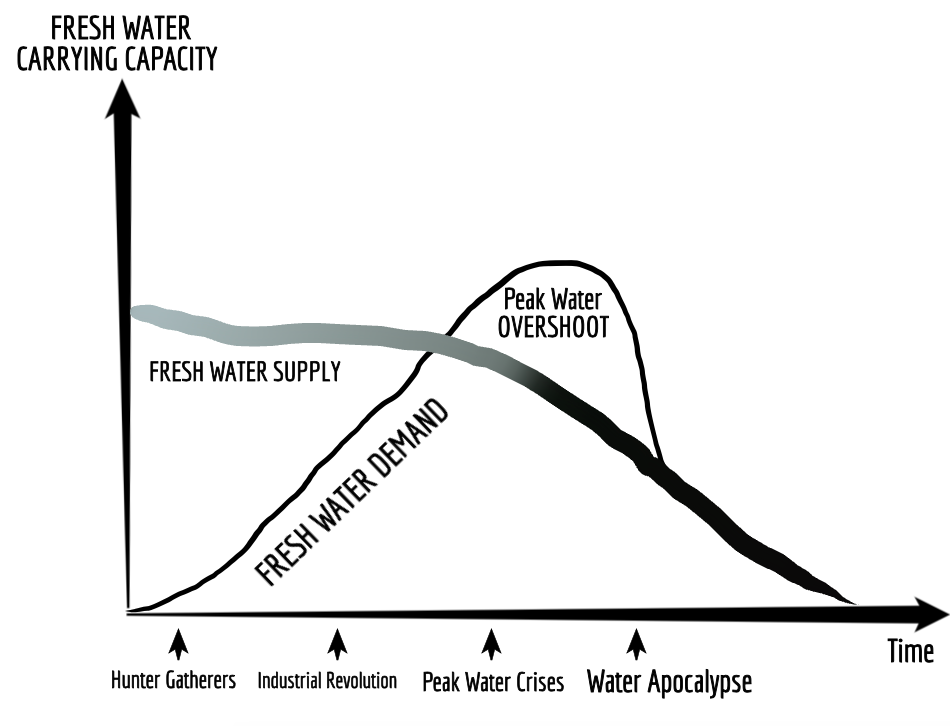
Figure 2: Summary of the Inivitability of Water Apocalypse
We will apply STORYTELLING THEATER concepts from Michel Foucault’s Language, Counter-memory, Practices book to look at how Coca-Cola uses stage deirection, scenic images, and thespian trickery to make you the consuming public believe Coca-Cola replenishes more aquifer groundwater than is used in its colas and bottled water production. ‘Nietzsche, Genealogy, and History; Foucault (1977) essay from the above book Source. Most other quotes I use in this analysis are from chapter on ‘Fantasia of the Library’ Foucault, 1977). Source
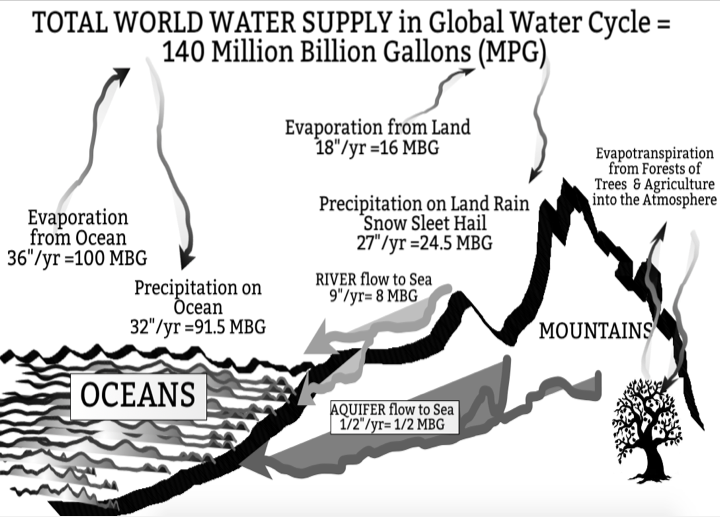
Figure 3: World Water Supply is140 Million Billion Gallons
My thesis is that while Water Capitalism is dialectically opposed by Water Democracy, neither will avert the inevitability of Water Apocalypse. Therefore a third way, I call Blue Revolution is possible if we look at the ensemble of multipplicities the dialectic polemics is ignoring, or just too blind to see.

Figure 4: Relation of Water Apocalypse to the Blue Revolution
The above figure summarizes the new book: Business Storytelling and the Inevitable Water Apocalypse (book remains online until published by UK/NY: Singapore: World Scientific Press -- David M. Boje
Hey, I did not say avertying Wate Apocalypse, finding our way to Blue Revolution would be easy. What is clear, is the science is telling a true story. Satellites don't lie.

Figure 5: The Groundwater Aquifer Depleation, Water Apocalypse in the United States (NASA photo)
This map is a bit of 'true storytelling, a visual narrative of the groundwater aquifer supply in mid-September 2015. It compares the average for the same time of year between 1948 and 2012. Dark red represents areas where dry conditions have reached levels that historically occur less than 2 percent of the time (once every 50 or more years). (NASA 'The West Dries Up', image from Pérez Ramos, 2016: 46).
"Business storytelling research needs a new method to deconstruct what Michel Foucault (1984) would call its ‘regimes of truth.’ Be skeptical of business storytelling, the entire TamaraLand (Boje, 1991, 1995) of water supply chains, bottle water purveyors, marketing ads about health effects of bottled water, municipalities adding fluoride to your drinking water, regulators influenced by Titan-multinational water company’s lobbyists, and especially distrust business schools teaching water strategies to MBAs. You will need a way to deconstruct this sort of business storytelling if we are to find the ‘antenarratives’ of Blue Revolution in time to avert Water Apocalypse." See book link above
There is hope. Not every businessman is a Scrouge. David Bamberger 50 years ago, retired and used his Church’s Chicken fortune to purchase 5,500 acres of overgrazed waterless hill country near Johnson City, Texas, he named Bamberger Selah Ranch Preserve. He planted grasses to soak in what little rain fell on hillside to actually replenish aquifers. Bamberger devoted the rest of his life to restoring the degraded landscape. Today, the land has been restored to its original habitat and boasts enormous biodiversity. Bamberger's fresh water stewardship and land conservation can be replicated across the dried up regions.
Bambergerranch.org ‘Selah Bamberg Ranch Preserve,’ accessed Jan 20 2019 at https://bambergerranch.org
National Geographic video “Selah, Water from Stone” accessed Jan 20 2019 at https://www.nationalgeographic.com/video/shorts/924773443513/ or https://www.youtube.com/watch?v=ZSPkcpGmflE
"Blue Revolution is an extension of my earlier storytelling research work. In my last two books (2019a) ‘Global Storytelling: There is No Planet B’ and (2019b) ‘Organizational Research: Storytelling in Action’, I introduced a few fragments of this new storytelling methodology, which I called a ‘Fourth Wave ‘Grounded Theory (GT) Storytelling Methodology.’ In the Global Storytelling book (2019a: 11 in the original) I summarized it:
“… I propose what I call ‘ontology of existence’ 4th wave GT methodology to address the question: ‘how we can live in peace and harmony in the material world of planetary boundaries?’ I call it ‘self-correcting’ induction-deduction-abduction.” I applied ‘true storytelling’ ethics (Boje, Larsen, & Brunn, 2017) in a scientific way, by doing longitudinal successive self-correcting comparisons, in a search for a ‘Ground’ and a ‘Theory’ for the nine processes changing so radically that current approaches to Globalization are ill equipped to save humanity from Sixth Extinction. “… Just look at plastic water bottles, plastic shopping bats, and so on. These are fatal to marine line, to sea birds, who either are caught in them, or ingest them. Plastic swirls in the Atlantic and Pacific oceans are as large as France” (Boje, 2019a: 12 in original manuscript).
The ontology of our very existence on this planet, that is 70% water, of which about ½ of one percent of it is fresh drinkable water to assuage the thirst of one’s physical body, which is also 70% or more water, the entire ‘Blue Revolution’ definitely needs this ‘self-correcting storytelling methodology’ to sort our the fake storytelling of ‘Water Capitalism’ (Loomis, 2013, White, 2013; Boje & Saylors, 2018). This ‘Water Capitalism’ business storytelling is prescribing ‘market forces’ ‘privatizing’ and ‘commodifying’ freshwater to solve the ‘water scarcity’ of over four billion people. The business of producing and sell us microplastics that break down polluting all the oceans, killing 60% of marine life, is just part of the ‘Water Apocalypse. “People eat the fish, oysters, and lobsters and so on that have ingested the microplastics” (Boje, 2019a: 12 in original manuscript).
The 4th wave storytelling methodology extends C.S. Peirce’s idea that by sequential sampling, each time forming abductive proposition, we can approach self-correcting induction, and find that Black Swan, in the long run. We need a self-correcting analysis of the whole history of water business storytelling, and the ways in which ‘Water Wars’ (Shiva, 2016) are happening around the world. Peirce wrote of ‘the constant tendency of the induction process to correct itself” as the “essence” and “marvel” of induction (as cited in von Wright, 1941/1965: 160; Boje 2019b: 17 in original). We need that self-correcting process to not only deconstruct, but to transform business storytelling into something that might actual manifest ways to avert water shortages, water wars, get the toxic chemical pollutants out of public water works, and fix the leaky water infrastructure." - See book link above
Self-Correcting Storytelling Methodology
"In the ‘Organizational Research: Storytelling In Action’
(2019b) book, I developed introductory aspects of this
‘self-correcting storytelling research methodology’ about
developing “fair samples” to verify 4th Wave GT inferences by
applying Charles Sanders Peirce (1931/1958: Vol. I: 28)
as quoted in Georg Henrik von Wright (1941/1965: 160).
Professor von Wright also quotes Peirce (1931/1958: Vol. II:
455f, 501f): “the constant tendency of induction process to
correct itself” as the “essence” and the “marvel of
induction.” Professor von Wright (1941/1965: 159, italics in
original) inaugurates it a “self-correcting operation,” and
claims it is ‘the best mode of reasoning about the
unknown… on the principle that future experience will
be in conformity with the past.” I say its time we tried
Peirce’s method of getting to deduction from induction, as the
basis for storytelling research methodology. By definitions
this ‘self-correcting storytelling methodology’ means
arriving at a deductive generalization by a process of
successive correction to find one’s way to any black swan
deviant in what we initially experienced as only white swans
everywhere. As von Wright (1941/1965: 160) calls it,
self-correcting induction gets to deduction by “finding one’s
way of from the labyrinth” in “self-correcting operation” that
leads to a “true generalization” and some true
storytelling from the water business TamaraLand." - See book
link above
"Keep in mind C.S. Peirce only wrote a few sentences about a self-correcting induction-deduction-abduction method, and as yet no one in GT or storytelling research has tried it. I have been working with doctoral students I mentor (Mabel Sanchez, Thomas Kleiner, James Sibel, Anna Stevenson, Etieno Enang, Russ Barnes, and Sabrina Dadder è encouraging them to try it out in their dissertations. At the 8th annual storytelling conference (December 2018) all of us (except Etieno) got together and drew diagrams about how to do ‘self-correcting storytelling methodology.’ I also work wed with Jens Larsen, Kenneth Mølbjerg Jørgensen, Don Pepion, Tyron Love, Duncan Pelly, Gregory Cajete, David Trafimow, Grace Ann Rosile, Manal Hamzeh, Yue Cai, Mark Hillon, Rohny Saylors, Jillian Saylors, and forty others at the conference to sort out this new approach to storytelling methodology".
Perice develops three kinds of induction, and only the 'Crude Induction' has been attempted in Grounded Theory.
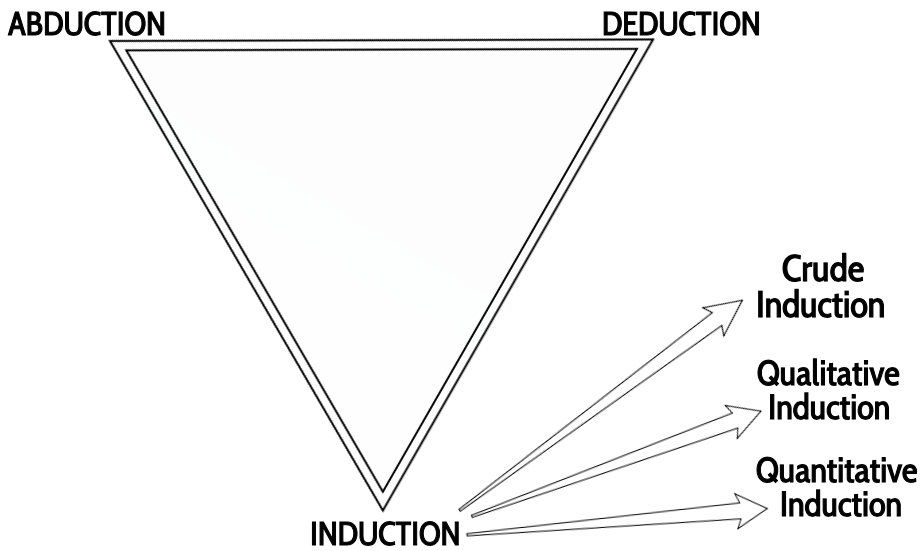
Figure 6: Three Types of Induction in Peircean Triadic of Abduction-Deduction-Induction
What I am proposing is a self-correcting storytelling methodology be attempted in 'Qualitative Induction' by obeying Peirce's(1931/1960, Vol. I: paragraph #95” pp. 39-40) two rules for resolving the classic problem of 'inductive fallacy':
- “The first of these is that the sample must be a random one.”
- “The other rule is that the character toward the ascertainment of the proportionate frequency of which in the lot sampled [the sampling is done], must not be determined by the character of the particular sample taken” (bracketed addition, original).
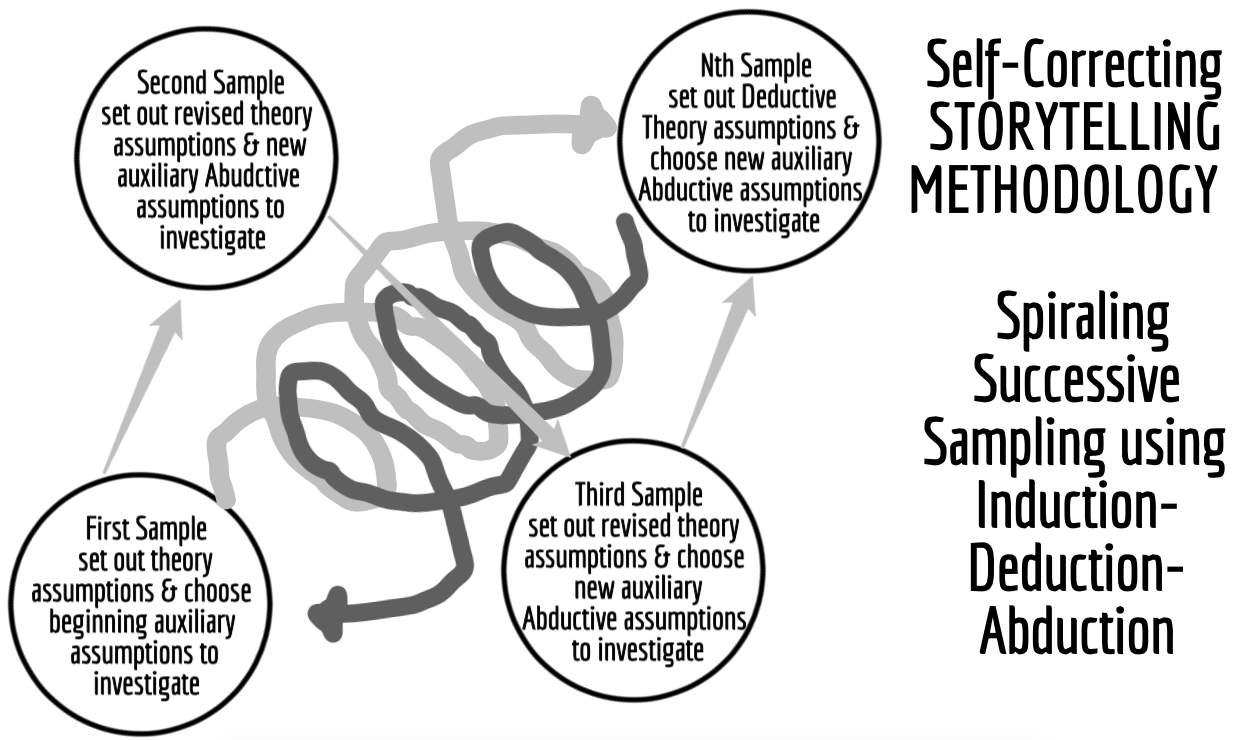
Figure 7: Self-Correcting Storytelling Methodology to deconstruct and transform Business Storytelling from the business-as-usual Death Spiral into Upward Spiral Momentum for the ‘Blue Revolution’
Boje Storytelling Research Books
Boje, David M. (2014). Storytelling
Organizational Practices: Managing in the quantum age.
London: Routledge.
Boje, D. M. (2016). Organizational Change and
Global Standardization: Solutions to the Standards and
Norms Overwhelming Organizations. London/NY:
Routledge.
Boje, David M. (2019a in press). Global
Storytelling: There is No Planet B. Singapore/London/NY: World
Scientific.
Boje, David M. (2019b). Organizational Research: Storytelling
In Action. London/NY: Routledge.
